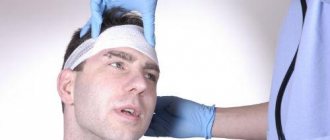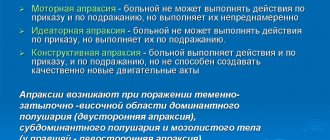Introduction
Fainting —also known as syncope —is the medical term for temporary loss of consciousness. Any episode of syncope is important for at least two reasons. First , fainting can cause injury, so it's important to try to prevent it from happening again. And secondly , fainting can sometimes be a sign of a serious medical problem. Although there are different types of syncope and the causes that lead to it, the most common type of syncope is vasovagal syncope.
What is vasovagal syncope?
Vasovagal syncope (also called neurocardiogenic syncope) is a temporary loss of consciousness caused by a neurological reflex that causes either a sudden dilation of the blood vessels in the legs, a very slow heart rate (bradycardia), or both.
Vasovagal syncope accounts for more than half of all syncope. While doctors often call it "simple syncope," the mechanism of vasovagal syncope is actually not that simple. And misunderstandings about how vasovagal syncope works can lead to problems making the correct diagnosis or choosing appropriate treatment.
Classification
Simple syncope is part of the structure of neurocardiogenic syncope. Taking into account the etiology, they are divided into two options - typical (emotional, orthostatic) and atypical. The latter are characterized by the absence of triggers and prodromal phenomena, therefore they are sometimes called “malignant”. According to hemodynamic parameters, vasomotor syncope is classified as follows:
- Mixed (1 type). Heart rate decreases by more than 10% of baseline, reaching 40 beats/min or less (but not longer than 10 seconds) without asystole or cardiac arrest for up to 3 seconds. Bradycardia is preceded by a drop in blood pressure.
- Cardioinhibitory (type 2). The minimum heart rate remains below 40 beats per minute for more than 10 seconds. Asystole is absent (type 2A) or lasts more than 3 seconds (type 2B). In the second case, hypotension occurs simultaneously with a decrease in heart rate.
- Vasodepressor (type 3). Loss of consciousness is accompanied by arterial hypotension without severe bradycardia. The drop in heart rate is less than 1/10 of the maximum.
Causes and triggers of vasovagal syncope
Vasovagal syncope occurs when something triggers the vasovagal reflex, causing the blood vessels to suddenly dilate. The dilation of blood vessels causes a significant portion of the blood volume to accumulate in the legs.
This association is often accompanied by a slowing of the heart rate. As a result, blood pressure suddenly drops. If the drop in pressure is enough to deprive the brain of oxygen, fainting occurs.
In most people with vasovagal syncope, dilation of the blood vessels is the predominant factor causing loss of consciousness. However, in some people, slowing the heart rate plays an important role.
Common triggers for vasovagal syncope include:
- sudden, severe pain;
- blood donation;
- traumatic event;
- extremely difficulty urinating or defecating;
- attack of prolonged and severe cough;
- hyperventilation;
- standing still for a long time (for example, if you sit for a long time);
- overwork in hot weather;
- excessive use of alcohol or substances (such as pills).
If an episode of syncope follows any of these events, vasovagal syncope is almost certainly occurring.
Symptoms and signs
Although the loss of consciousness in vasovagal syncope can be quite sudden, it is more typical that it is preceded by several seconds or several minutes of warning symptoms. These symptoms are sometimes called the “prodrome” (precursor) of fainting. Those that occur after you wake up from blacking out are called “postdromal.”
Prodromal symptoms
Prodromal symptoms of syncope often include:
- dizziness;
- buzzing or ringing in the ears;
- visual disturbances such as flickering or tunnel vision;
- sudden sweating;
- sudden nausea.
These prodromal symptoms are accompanied by a feeling of "weakness" and then, finally, loss of consciousness. The time between the onset of prodromal symptoms and actual syncope may be several minutes or one or two seconds.
If you feel yourself fainting, you can break the episode by lying with your legs elevated or sitting in a chair with your head between your knees. Wait until you feel better before you try to stand up.
Features of fainting
Fainting itself also has several characteristic features:
- Vasovagal syncope almost always occurs when the victim is standing or sitting upright (when blood may pool in the legs), and almost never occurs while lying down.
- People who experience vasovagal syncope usually regain consciousness within seconds of falling to the ground. This is because once on the ground, gravity no longer causes blood to pool in the legs and blood pressure improves almost instantly.
- On the other hand, if the victim is held upright by a benevolent bystander, the unconscious state can become very prolonged. This is a potentially dangerous situation because while the victim is upright and unconscious, the brain is not sufficiently perfused with blood.
If you see someone weak, place them on their back and raise their legs about 12 inches above their heart. Loosen any belt, collar or constricting clothing. Seek help if the condition lasts longer than a few seconds.
Postdromal symptoms
After an episode of vasovagal syncope, many people feel terrible for a few hours or even for the next few days or even longer. During this "postdrome" period, people typically experience extreme fatigue, nausea, dizziness, and loss of appetite.
It's especially important to note that until these lingering (and very annoying) symptoms subside, people are especially prone to syncope, so they need to be especially alert to warning symptoms that may indicate that fainting is imminent.
Recurrent syncope
People who have had one or two episodes of vasovagal syncope are often able to recognize the warning signs in advance, so they will know when an event is about to occur. More importantly, if they recognize the warning signs, they can prevent loss of consciousness by simply lying down and raising their legs just above their heart.
Older people with vasovagal syncope are more likely to have “atypical” symptoms. Their fainting may occur without any identifiable trigger and without any warning signs. Making the correct diagnosis in these cases can be a real challenge for doctors.
In general, vasovagal syncope itself is not life-threatening, but injury from a fall may occur. And if the episodes are frequent enough, the condition can certainly be quite disruptive to normal life.
When to see a doctor?
One episode of fainting is usually not serious. However, you should see your doctor if you are pregnant, have recurrent episodes of syncope or blurred vision, chest pain, confusion, trouble speaking, shortness of breath, or irregular heartbeat to the point of fainting.
Prevention measures
In order to prevent vasovagal fainting, first of all, it is necessary to avoid psycho-emotional stress. In particular, these include both conflict situations that can cause stress and prolonged stay in an upright position. At the same time, active outdoor activities are used as preventive measures to prevent loss of consciousness: walking, running, and so on.
You can also prevent the onset of another fainting spell:
- hardening or contrast shower (strengthens blood vessels);
- adherence to daily routine;
- duration is at least 8 hours;
- Regular consumption of herbal tea, red wine or coffee to restore blood pressure;
- drinking chamomile, lemon balm or St. John's wort tea, which has a positive effect on the nervous system.
Vasovagal syncope is not a dangerous phenomenon, which, however, may indicate serious pathologies: cardiovascular diseases, tumors. You can cope with such phenomena if you change your lifestyle.
Risk factors
The reflex that causes vasovagal syncope can occur to some degree in everyone, so almost anyone can experience a vasovagal episode if a strong enough trigger event occurs. Indeed, it is likely that most people will experience an episode of fainting at some time during their lifetime.
Vasovagal syncope can occur at any age, but it is much more common in adolescents and young adults than in older adults.
Some people are particularly prone to vasovagal episodes and may lose consciousness even with relatively mild triggers. These people tend to have periodic fainting beginning in adolescence. They often experience fainting after several different types of triggers.
In rare cases in people, vasovagal syncope is so common and so difficult to treat that the person is effectively disabled. These people often have a form of dysautonomia (autonomic nervous system imbalance) that makes them very prone to the vasovagal reflex that causes this condition.
They often have other symptoms typical of dysautonomia, such as bloating or cramping, diarrhea, constipation, extreme fatigue and various aches and pains.
Complications
Fainting at heights, while working with moving machinery, or near water or fire poses a risk of serious injury or death. The likelihood of damage increases in old age, especially with concomitant diseases. Syncope in representatives of certain professions (drivers, machinists, pilots) poses a danger not only to the patients themselves, but also to others.
Atypical cases with sudden prolonged loss of consciousness, often recurrent syncope with asystolic pauses, deserve special attention.
Diagnostics
Doctors who know how to correctly diagnose vasovagal syncope understand that this condition is almost always situational. Vasovagal syncope is especially likely after a viral illness, after exercise, after a warm shower, or early in the morning—in other words, relative dehydration can occur at any time.
Given these characteristic features and the situational nature of this condition, doctors should be able to make a correct diagnosis simply by looking at symptoms, medical history, family history, and the sequence of events leading to syncope.
Physical examination of people with vasovagal syncope is usually completely normal. However, testing (such as an ECG) is very useful in diagnosing the similar conditions of orthostatic hypotension or postural orthostatic tachycardia syndrome (POTS) and can be very helpful in screening for likely candidates.
Links[edit]
- ^ abcdefghijk Aydin, Massachusetts; Salukhe, TV; Wilke, I; Willems, S (26 October 2010). "Management and therapy of vasovagal syncope: a review". World Journal of Cardiology
.
2
(10): 308–15. DOI: 10.4330/wjc.v2.i10.308. PMC 2998831. PMID 21160608. - ^ abcdefghijklmnopqr Adkisson, W.O.; Benditt, CEO (September 2021). "The pathophysiology of reflex syncope: a review." Journal of Cardiovascular Electrophysiology
.
28
(9):1088–1097. DOI: 10.1111/jce.13266. PMID 28776824. S2CID 39638908. - ^ ab Brignol, Michele; Benditt, David G. (2011). Fainting: an evidence-based approach. Springer Science & Business Media. item 158. ISBN. 9780857292018.
- ^ abc Shen, W. K.; Sheldon, RS; Benditt, D. G.; Cohen, Michigan; Forman, DE; Goldberger, Z. D.; Grubb, B.P.; Hamdan, M.H.; Krahn, A.D.; Link, M.S.; Olshansky, B; Raj, S.R.; Sandhu, RK; Soraja, D; Sun, British Columbia; Yancey, C.W. (August 1, 2021). "ACC/AHA/HRS Guidelines for the Evaluation and Management of Patients with Syncope, 2021: Summary: A Report from the American College of Cardiology/American Heart Association Clinical Practice Guidelines and the Heart Rhythm Society." Circulation
.
136
(5):e25–e59. DOI: 10.1161/CIR.0000000000000498. PMID 28280232. - ^ abcdefg "Fainting Information Page". National Institute of Neurological Disorders and Stroke
. Retrieved November 9, 2021. - "Vasovagal syncope: causes". MayoClinic.com. August 7, 2010. Retrieved August 10 +2016.
- Accurso, V.; and others. (August 2001). "Susceptibility to vasovagal syncope in patients with blood/injury phobia". Circulation
.
104
(8):903–907. DOI: 10.1161/hc3301.094910. PMID 11514377. [1] - James G. Hamilton (August 1995). “Needlephobia is an advanced diagnosis.” Journal of Family Practice
.
41
(2): 169–175 REVIEW. PMID 7636457. - Jump up
↑ Rossi S, Hallett M, Rossini PM, Pascual-Leone A (2009).
"Safety, ethical considerations, and guidelines for the use of transcranial magnetic stimulation in clinical practice and research". Clinical Neurophysiology
.
120
(12):2008–2039. DOI: 10.1016/j.clinph.2009.08.016. LVP: 11572/145680. PMC 3260536. PMID 19833552. - Blanc JJ, Alboni P, Benditt DG (2015). "Vasovagal syncope in humans and protective reactions in animals." Europace
.
17
(3): 345–9. DOI: 10.1093/EUROPACE/euu367. PMID 25662986. - Alboni R, Alboni M (2014). "Vasovagal syncope as a manifestation of an evolutionary selected trait". Journal of Atrial Fibrillation
.
7
(2): 1035. doi:10.4022/jafib.1035 (inactive January 17, 2021). PMC 5135249. PMID 27957092. CS1 maint: DOI inactive as of January 2021 (link) - ^ ab Fenton AM, Hammill SC, Rea RF, Low PA, Shen WK (2000). "Vasovagal syncope." Anna. Intl. Med
.
133
(9):714–25. DOI: 10.7326/0003-4819-133-9-200011070-00014. PMID 11074905. S2CID 45453509. - ^ a b Durand, W.M.; D.H. Barlow (2006). Fundamentals of Abnormal Psychology 4th Edition. paragraph 150. ISBN 978-1111836986. Retrieved August 12 +2016.
- Hersen, Michel (2005). Encyclopedia of Behavior Modification and Cognitive Behavioral Therapy. SAGE. paragraph 30. ISBN 9780761927471.
- ^ ab Felgoise, Stephanie; Nezu, Arthur M.; Nezu, Christine M.; Reinecke, Mark A. (2006). Encyclopedia of Cognitive Behavioral Therapy. Springer Science & Business Media. item 291. ISBN. 9780306485817.
- France CR, France JL, Patterson SM (January 2006). "Blood pressure and cerebral oxygenation responses to skeletal muscle tension: a comparison of two physical techniques to prevent vasovagal responses." Clin Physiol Funct Imaging
.
26
(1): 21–5. DOI: 10.1111/j.1475-097X.2005.00642.x. PMID 16398666. S2CID 2763372. - Sheldon R, Connolly S, Rose S, Klingenheben T, Crane A, Morillo S, Talajic M, Koo T, Fouad-Tarazi F, Ritchie D, Koshman ML. (March 2006). "Prevention of syncope (POST): a randomized placebo-controlled trial of metoprolol in the prevention of vasovagal syncope". Circulation
.
113
(9):1164–70. DOI: 10.1161/CIRCULATIONAHA.105.535161. PMID 16505178. - Madrid AG, Ortega J, Rebollo JG, Manzano JG, Segovia JG, Sanchez A, Pena G, Moro C (February 2001). "Lack of efficacy of atenolol for the prevention of neurally mediated syncope in a highly symptomatic population: a prospective, double-blind, randomized and placebo-controlled study." Jam.
Coll. Cardiol .
37
(2):554–9. DOI: 10.1016/S0735-1097(00)01155-4. PMID 11216978. - Grubb BP, Kosinski D, Mouhaffel A, Pothoulakis A (24 May 2012). "Use of methylphenidate in the treatment of refractory neurocardiogenic syncope." Stimulation Clin Electrophysiol
.
19
(5): 836–40. DOI: 10.1111/j.1540-8159.1996.tb03367.x. PMID 8734752. S2CID 34197462. - Ali Aydin, Muhammet; Salukhe, Tushar; Wilkie, Iris; Willems, Stefan (2010). "Management and therapy of vasovagal syncope: a review". World J Cardiol
.
2
(10): 308–15. DOI: 10.4330/wjc.v2.i10.308. PMC 2998831. PMID 21160608. - Amy M. Karch. "adrenaline (adrenaline)". 2006 Care of Lippincott's Drug Guide
. Retrieved August 12 +2016. - "Vasovagal syncope: what is it?" . Archived from the original on January 3, 2014. Retrieved August 11 +2016.
- "Prognosis of vasovagal syncope". MDG Guidelines. Retrieved August 11 +2016.
Treatment of vasovagal syncope
People who have had a single episode of vasovagal syncope do not need any medical treatment at all.
But if there have been recurring episodes, there will likely be more episodes if the person is not treated. And, as anyone with vasovagal syncope knows, these episodes of fainting often come at the most inconvenient or impractical times and can be very life-disrupting. Fortunately, treatment is usually quite helpful.
There are several main types of treatment for vasovagal syncope: medications, exercise, and a pacemaker.
Medications
In some people, vasovagal syncope occurs with alarming frequency, even when all appropriate precautions are taken. For these people, drug therapy is often helpful.
In the past, the drugs most commonly used for vasovagal syncope were beta blockers, but some studies have not shown any benefit and these drugs are not currently recommended.
Drugs that have been shown to have some effectiveness include:
- Midodrine, a vasoconstrictor that dilates blood vessels;
- Disopyramide, an antiarrhythmic drug;
- Serotonin reuptake inhibitors;
- Theophylline, commonly used to treat asthma.
Although one or more of these medications often helps reduce fainting, finding the “right” combination of medications is usually a matter of trial and error. Patience is required on the part of both the physician and the patient to find the best therapy.
Physical exercise
Many people with dysautonomia also tend to experience vasovagal syncope; indeed, it seems likely that many people with new-onset vasovagal syncope may indeed have dysautonomia. Because some dysautonomies respond favorably to exercise, exercise may likely have similar benefits for people with vasovagal syncope.
If you experience a recurrence of fainting, be sure to talk to your doctor before starting to exercise. Depending on the underlying cause, you may need to undergo stress testing and other tests to determine how much exercise you can tolerate.
Interestingly, some people have been able to interrupt episodes of vasovagal syncope by starting to do muscle tension exercises. These exercises apparently reduce the dilation of blood vessels and increase the amount of blood returned to the heart. Examples of exercises include:
- Cross your legs and simultaneously tense your legs, stomach and buttocks.
- Tighten your arms with clenched fists.
- Tighten your leg muscles.
- Squeeze the rubber ball.
Use of pacemakers
Several years ago, there was great enthusiasm for the use of pacemakers to treat vasovagal syncope, as the condition is usually accompanied by a sudden decrease in heart rate. However, enthusiasm for pacemaker therapy quickly waned when it was finally noted that many patients with vasovagal syncope who were given pacemakers continued to lose consciousness—they simply did so without a change in heart rhythm.
As it turns out, it is the pooling of blood in the legs, not a slow heartbeat, that causes most people to faint. However, in some cases, a decrease in heart rate may be the underlying cause.
A pacemaker should only be considered if syncope is severe or recurrent and conservative measures have failed and there is significant cardiac slowing as demonstrated by ECG testing.
Observation
- Management of patients with syncope depends on the etiology and treatment prescribed.
- Frequent syncope of unknown etiology requires further investigation, for example with an implantable loop ECG recorder, since it may be cardiogenic.
- In cardiogenic cases, careful monitoring is indicated, since the mortality rate in these patients is much higher than in cases of syncope of other etiologies.
Elderly patients
It is necessary to find out in what conditions the patient lives, since elderly patients with fainting often need constant help at home. In addition, pay special attention to the medications the patient is taking.
The cardiologist must contact the patient’s attending physician and discuss with him the causes of fainting, the prescribed treatment, and when implanting a pacemaker or defibrillator, warn him what to watch out for and in what cases consultation with a specialist is indicated.
Hospitalization
In cases of fainting due to heart disease, the prognosis is the least favorable; such patients are hospitalized for examination. Patients without organic heart disease, without ECG changes and with a clinical picture of vasovagal syncope have a generally favorable prognosis, so they are usually examined on an outpatient basis. In addition, hospitalization is appropriate for cases of sudden death in the family history, physical exertion, and syncope accompanied by trauma.










